A very nice run yesterday along the bank of the Sangamon. 🏃🏻♂️
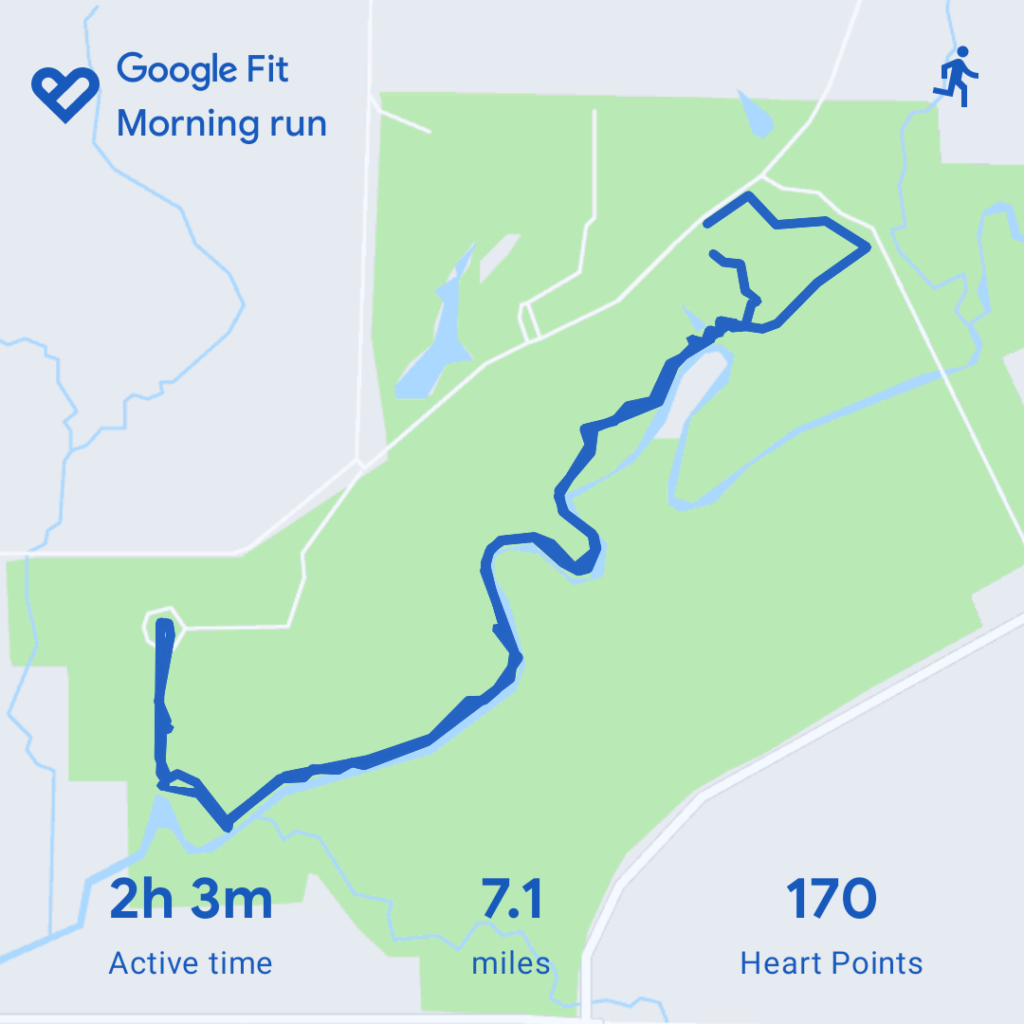



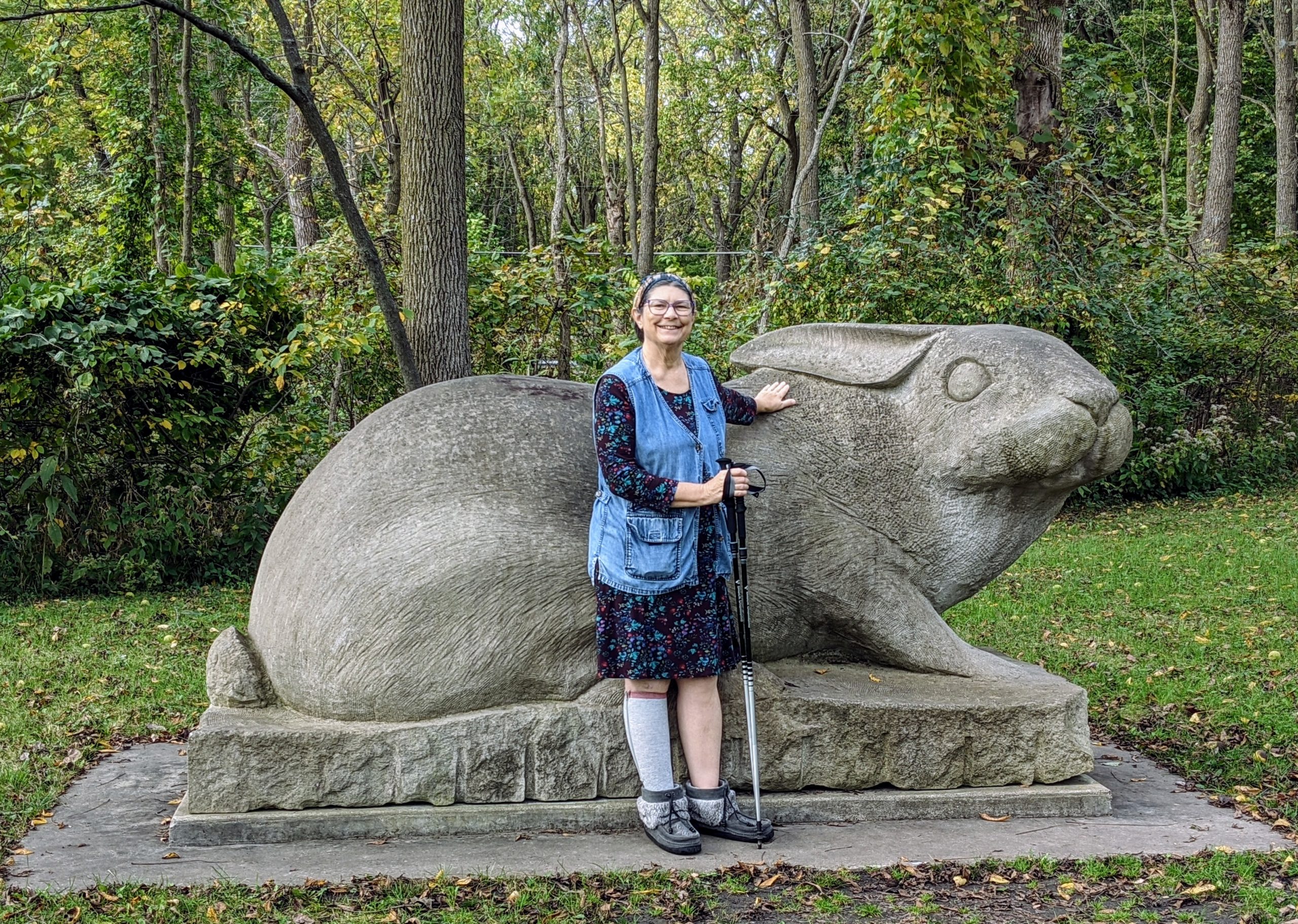
My sweetie @jackieLbrewer hangin’ with the same bunny.
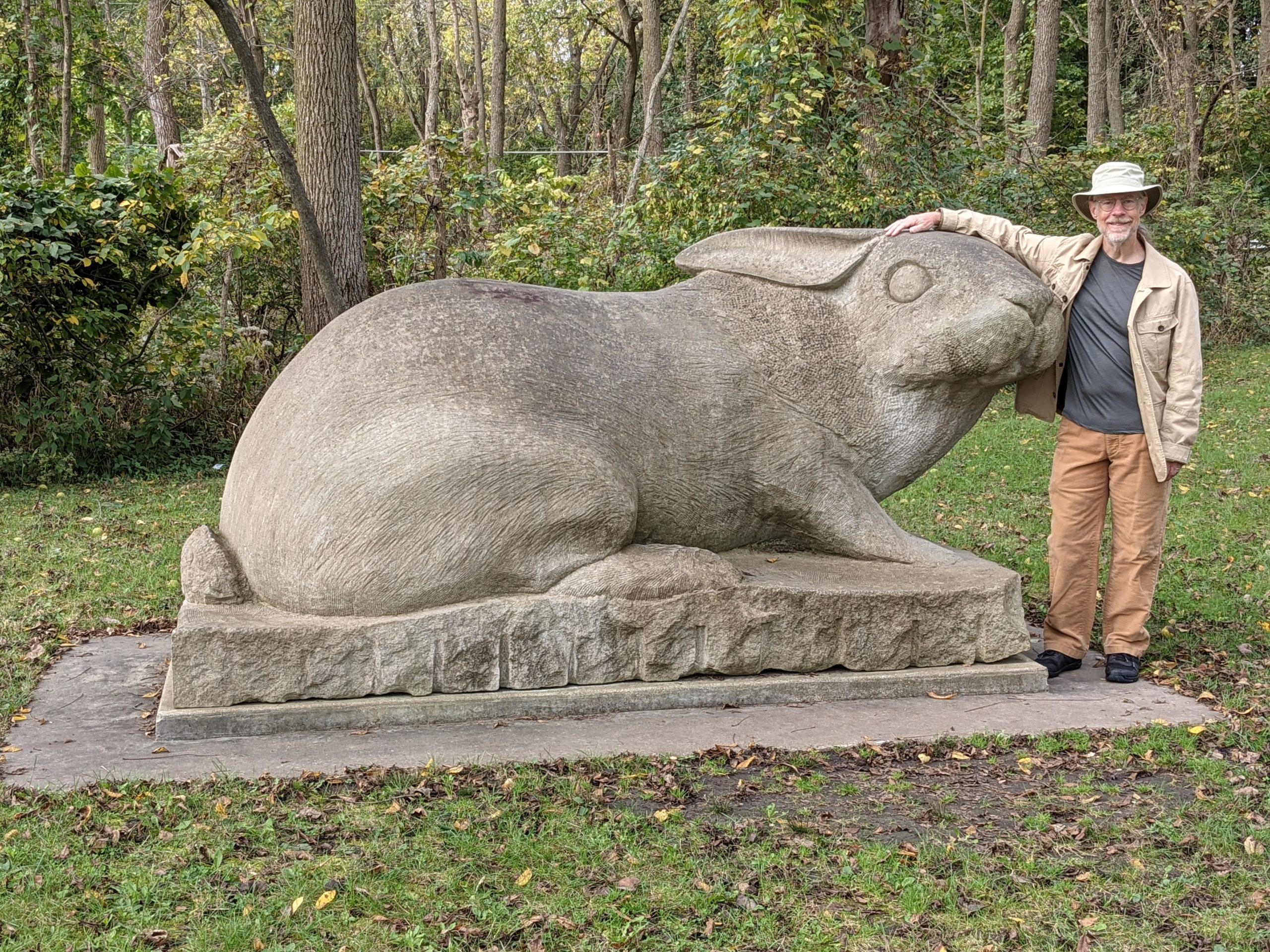
Hangin’ with my favorite bunny.
Sculpture in downtown Urbana. 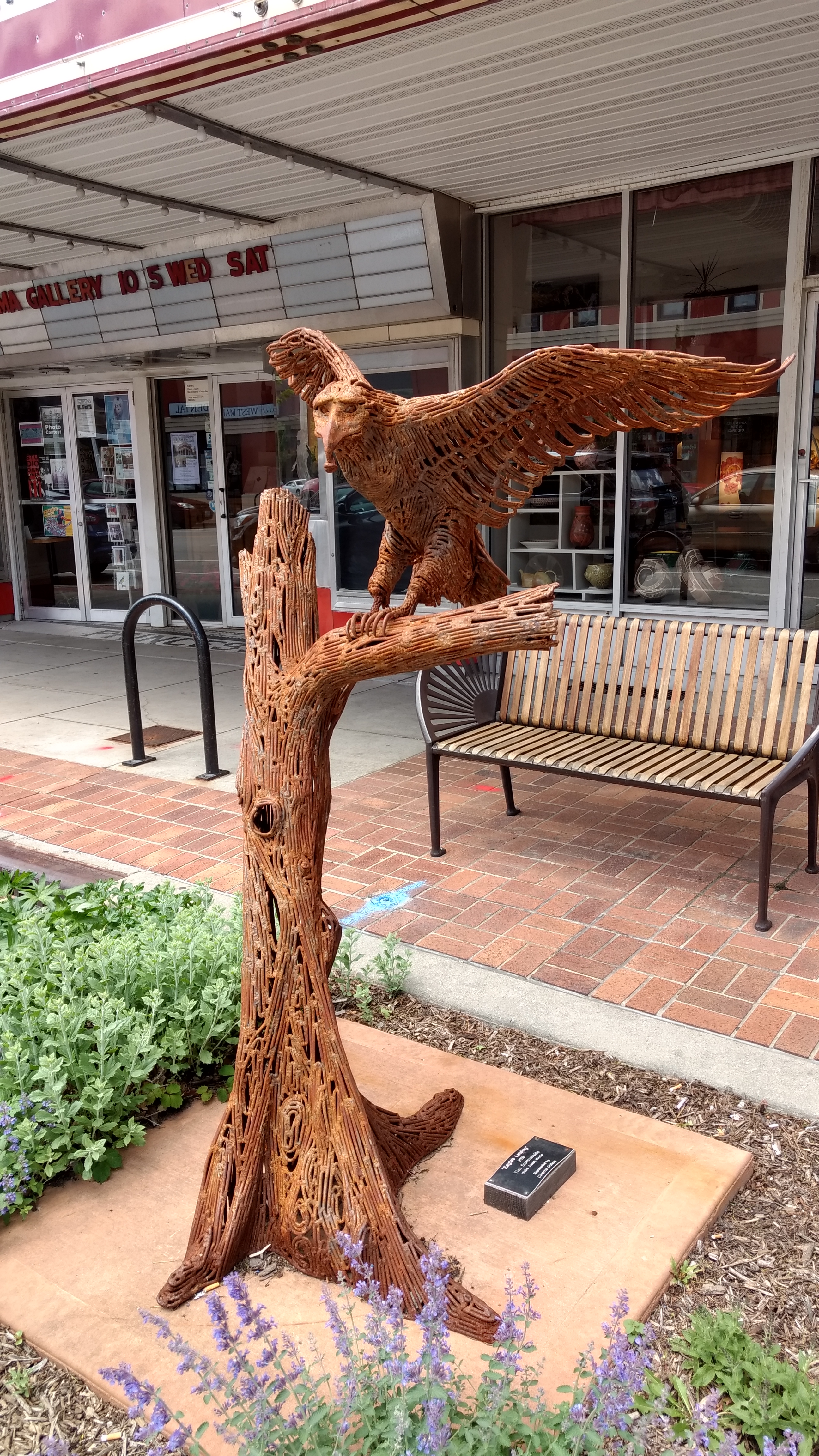

For about six weeks now, I’ve been playing Ingress.
It’s a game. You could almost call it a video game—you see what’s happening on a video screen—but to play you have to go outside: The action of the game happens at specific places in the real world.
The conceit of the game is that matter from another dimension is intruding into our world via portals. In our world, these portals appear as works of public art or unique architecture. Via the game (running on an Android phone or tablet), you can locate and manipulate these portals.
I’ve been having a great time. I’m working with a half-dozen or so local Resistance players, some new like me, others already at level 8 and mainly providing support (since they’re no longer working to level up themselves).
The structure of the game encourages team play—building a powerful portal requires multiple high-level players to work together. But the team play doesn’t need to be simultaneous, just somewhat coordinated. Lower-level players can make faster progress if they play with a higher-level player, but it’s not necessary.
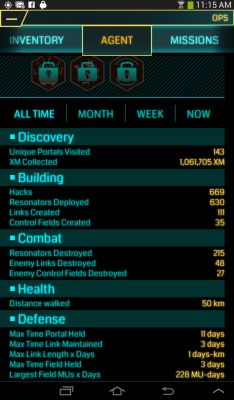 Besides the pleasures of loosely integrated, minimal-pressure teamwork, the other great thing about the game is that, because it takes place in the real world, to play it you have to go out in the real world. The game reports on how far you’ve walked in the course of playing it—for me, 50 km in the past six weeks. (See “Distance walked” in screenshot.) I credit that walking with helping me maintain my weight even though I haven’t been able to run for the past month.
Besides the pleasures of loosely integrated, minimal-pressure teamwork, the other great thing about the game is that, because it takes place in the real world, to play it you have to go out in the real world. The game reports on how far you’ve walked in the course of playing it—for me, 50 km in the past six weeks. (See “Distance walked” in screenshot.) I credit that walking with helping me maintain my weight even though I haven’t been able to run for the past month.
I’m also really into the public art aspect of the game. I was already a huge fan of public art, but the game has made me connect with individual works in a way that I hadn’t. I’m aware of individual pieces in a whole new way—how they relate in space with one another and with other aspects of the community. (Although it is a different experience now to go for a walk downtown. Even when I’m not playing, I’m aware that certain works that are portals in the game. I have to remember that most people are not.)
Anyway, Ingress is now in open beta. If you have an Android device, you can just download the game and go.
I recommend it.
If you’re local and play, get in touch. I’d be glad to help you level up.
Continuing our series of long walks to prepare for a possible through hike of the Kal-Haven trail, Jackie and I walked 16.72 miles today.
We walked to the University of Illinois’s arboretum, and then on through south Urbana to Milo’s where we had lunch. Then we walked to Meadowbrook Park and along the trail that goes along the south and west edges of the park, then through married student housing to the old Motorola building (where OLLI is now) to refill our water bottles, and then on home.
Jackie has asked that I specifically mention that we got a very close look at three juvenile Stufflesbeam (the plural of Stufflebeam, which is what we call ground hogs), just on the west side of the railroad embankment where Stadium Drive crosses Neil. One in particular stood just a few feet away, eating grass with great enthusiasm, close enough to give us a great view of his little nose.
Here’s what my tablet captured via Endomondo:
Jackie and I took a couple of pictures of one another with one of our favorite sculptures. We like this sculpture for various reasons, but one is that the very first time we came upon it, suddenly and unexpectedly as we took a turn in the path, we both had the same thought—and we both knew that the other was having that thought: “Anya wouldn’t like that!”
The picture Jackie took of me is pretty good—that’s what I look like. It’s of some interest to me because we took pictures with this sculpture a few years ago, and I didn’t like the pictures of me because of my weight at the time, and there was no way to crop the picture to hide my stomach and yet keep the rabbit sculpture.
I like this one better.
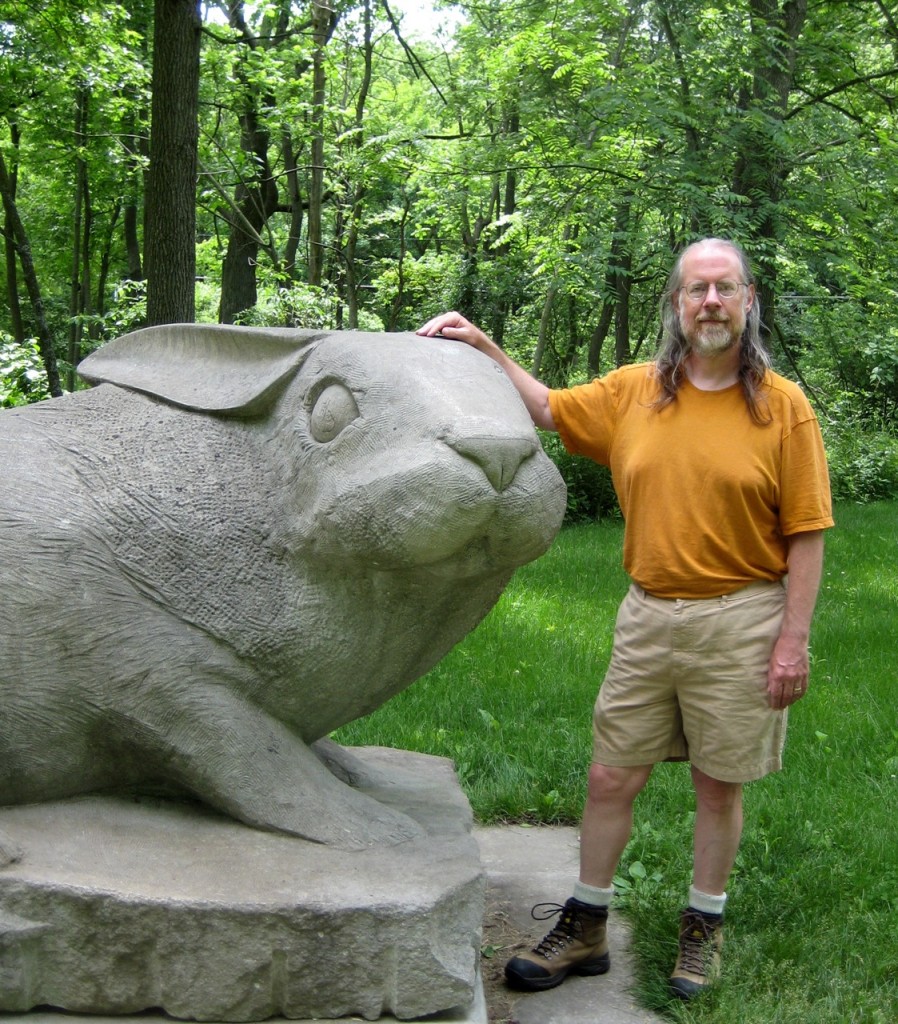
And, although Jackie just got an ordinary good picture of me, I managed to get a great picture of Jackie.
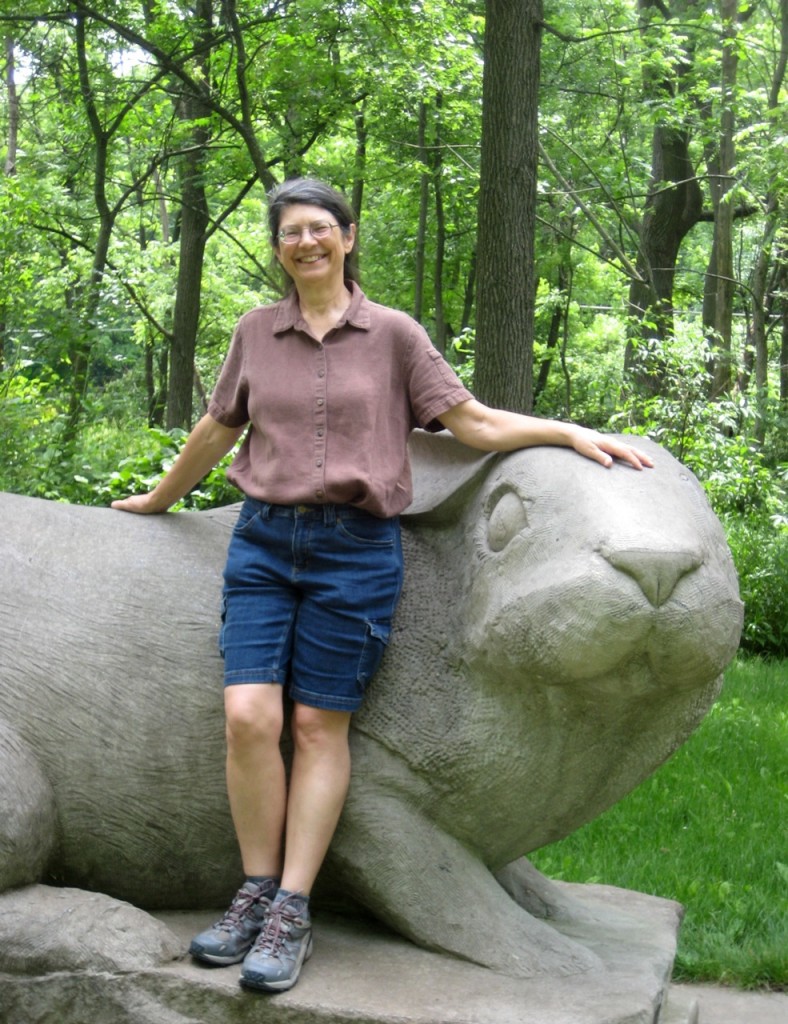
It’s a perfect picture of the Jackie I know—the Jackie I’ve been married to for 21 years.

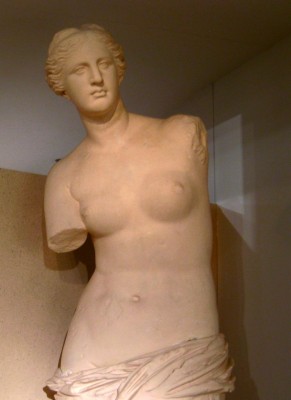
A hundred-odd years ago, a lot of towns and cities had their own museum. In those days, international travel was beyond the reach of ordinary people, and museums saw it as part of their mission to bring the great artistic and cultural works of the world to a place where ordinary people could see them. To support that, a whole industry existed making molds of the great works of European sculpture, and then casting plaster replicas of those works to be displayed in museums.
After all, the Venus de Milo can only be in one museum, but should only people who can get to the Louvre be able to see it?
A few decades later, fashions changed. Air travel and other changes made it possible for ordinary people to get to Europe after all, so they could see the great works of European art and culture. Rather suddenly, it no longer seemed like a great service to show people copies of the greatest works of art and culture. Museums decided that they should show people originals—even if they could only afford 3rd rate originals.
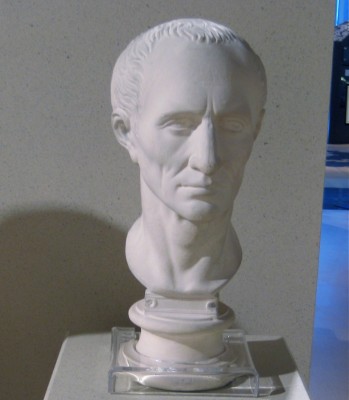
Thanks entirely to great good fortune, at the time that this shift was at its peak, a budget crunch at the University of Illinois had virtually shut down the museums that are now known as the Spurlock Museum. They had so little money, they were unable to hire a director, meaning that there was no one in authority to throw out the plaster copies of the great works and replace them with 3rd rate originals.
At museums all over the country, an incredible number of these excellent copies—quite literally museum quality—were simply thrown away. But not those belonging to the Spurlock Museum.
Among other things, we have a fairly complete set of replicas of the Elgin Marbles, made from molds taken before an ill-fated attempt at cleaning did serious damage to the originals. Scholars come from all over the world to study our copies.
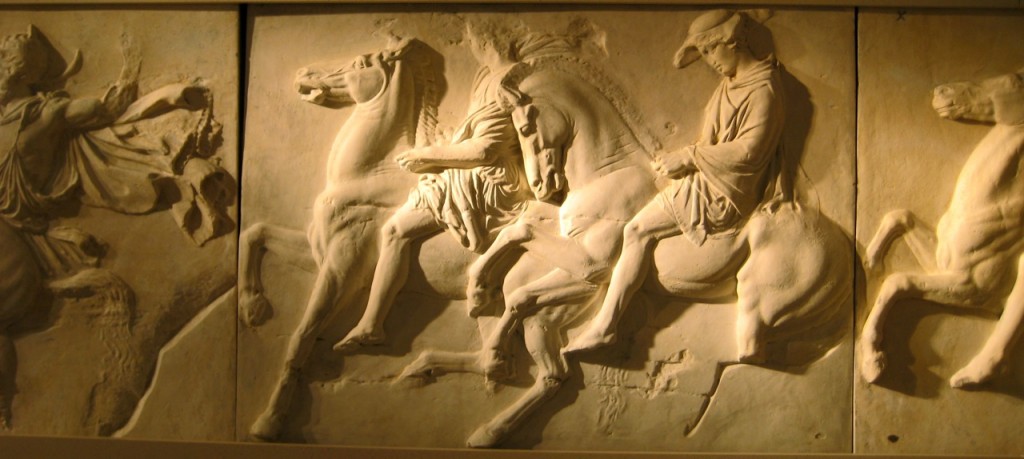
I was going to the Spurlock Museum today, to attend a meditation class by Mary Wolters (an excellent workshop, by the way), and decided to catch an earlier bus so I’d have half an hour to look around the collection. I’d several times wished I had a picture of one or another items from their collection to use to illustrate a Wise Bread post, and I figured this would be a good chance to get a few photos.
Having taken a few, I thought I’d share some here.
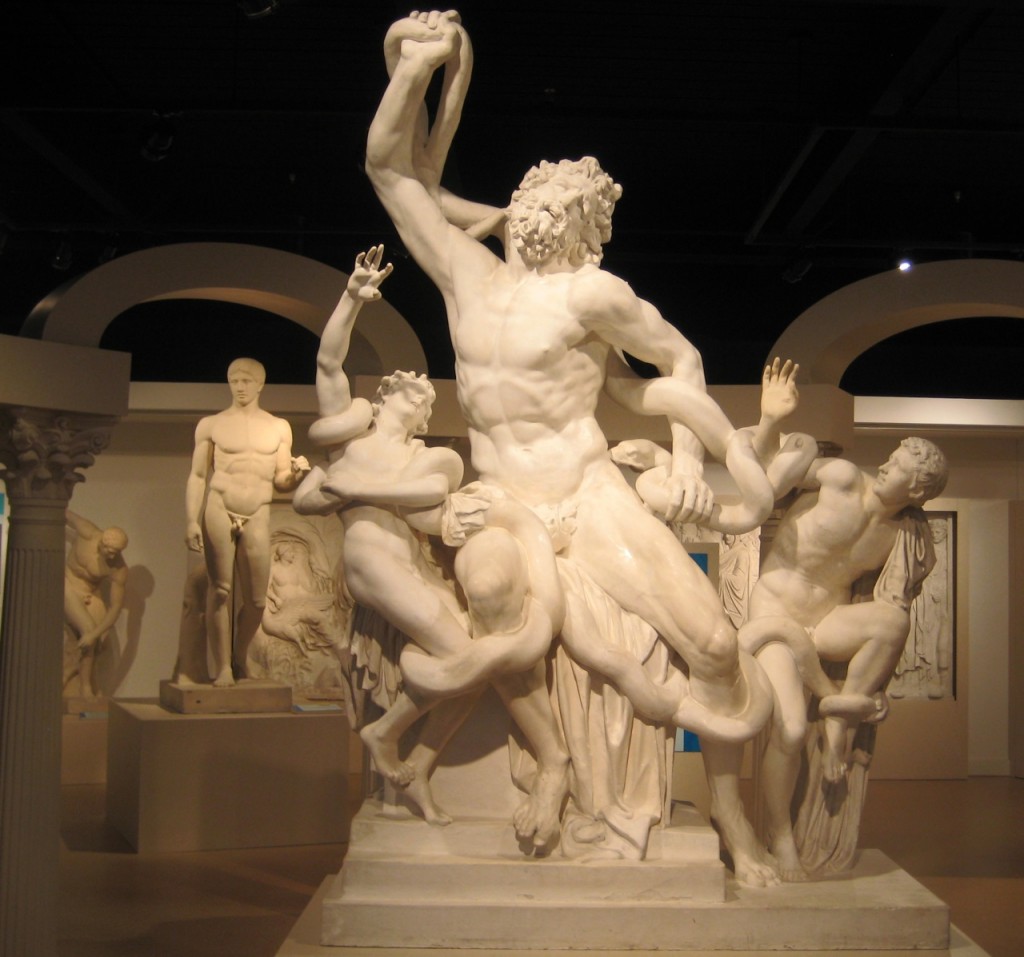
If you’re local, don’t miss the wonderful Spurlock Museum.
Apropos my previous post on public art in Detroit, I just saw that spokesman for the mayor’s office has stated that they’d consider erecting any donated public art, including a statue of Robocop.

Adoration of the Snowman, originally uploaded by bradipo. Photo by Philip Brewer. Snow sculpture by some neighbor kid, I assume.
I almost captured the posture in this picture—the snowman leaning back, face turned up, arms spread wide. He looks like there’s nothing in the world more interesting than the apartment building across the path.

Adoration of the Snowman by Philip Brewer is licensed under a Creative Commons Attribution 3.0 United States License.